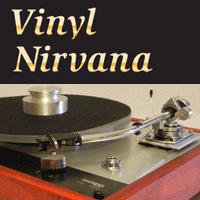Audiophile Pressing: The Rolling Stones in Mono
Several years after the Beatles and Bob Dylan got their just due in mono on audiophile vinyl, the Rolling Stones finally receive analog treatment worthy of their pivotal contributions to pop culture and rock n’ roll’s evolution. Spanning the band’s Decca output, and ranging from 1964’s The Rolling Stones through 1969’s Let It Bleed, the self-descriptive The Rolling Stones in Mono 16LP box set hits all the marks a reference archival release should. In short: For those wondering whether the trove—overseen by ABKCO audio engineer Teri Landi, cut at Abbey Road Studios by Sean Magee and Alex Wharton from new flat-master DSD files created by Bob Ludwig from the original analog mono master tapes, and pressed at GZ Media—is worth the roughly $350 investment even if you already own these records, you’ll get satisfaction. And much more. The anthology also again proves Phil Spector’s beliefs correct, at least in stereo’s nascent era.
As with the Fab Four pressings, some fans will undoubtedly pick nits with topics ranging from album-cover reproduction to whether “2000 Light Years from Home” sounds better on a U.K.-only LP last seen in an obscure dime store during the Lyndon Johnson presidency and now fetching outrageous sums on eBay. Let them. It’s their loss. Similarly, some reviewers will sweat over acute nuances amidst eight different pressings and, simultaneously, insert themselves into the narrative while mistaking self-importance and self-promotion for comprehensiveness. If you’re seeking such a comparative shootout or thesis-worthy track-by-track commentary, go ahead and stop reading. TONE’s purpose is more pragmatic and concise. Why? For one reason, practicality. Currently, the set is numbered and limited to 10,000 copies, meaning it could sell out while listeners sit on the sidelines waiting for a 3,000-word screed before deciding whether they should purchase it. Second, and more importantly: Fun. The thrills of a reissue as finely executed as The Rolling Stones in Mono relate to immediately experiencing songs you think you know inside-out from new perspectives made possible by freshly uncovered information, enhanced depth, and lifelike sonics that plop you down beside the band.
Such facets, and then some, are revealed moments after the needle hits the grooves of energetic platters like The Rolling Stones Now! and Aftermath. With the exception of Beggars Banquet and Let It Bleed, the mono mixes were given priority over their stereo counterparts—while the stereo versions of England’s Newest Hitmakers, 12 X 5, The Rolling Stones Now!, and Out Of Our Heads were all electronically processed. Just as notable, the mono sound mirrors how the Stones played in the studio—together, and at once, an approach that reflected the methodology of the blues and R&B legends that inspired them. Indeed, the environments and sensations delivered time and again by The Rolling Stones in Mono conjure that of intimate, sweaty, blues-filled juke joints on the South Side of Chicago at which the musicians, needing to compensate for the din of the crowd and clanking of bottles, cranked up their amplifiers and channeled their sound into explosive, massive balls capable of penetrating even brick walls. Cue up “The Last Time” from Out of Our Heads (U.S. version) or “Around and Around” from 12 x 5, and the intent is the same.
As a testament to the original producers and engineers, and to the quality of these dead-quiet pressings, the music that comes through en masse also features tremendous detail, depth, and spaciousness. These LPs convey the attack, decay, punch, pacing, power, and, most significantly, visceral directness more authoritatively and convincingly than even the long-out-of-print, exceptional-sounding SACDs of the same material. Above all, the vinyl delivers an abundance of tone and body—both the sort associated with individual instruments as well as the rarer, harder-to-replicate type engendered by the interaction of guitars, drums, bass, vocals, and a room.
The halos of space around Mick Jagger’s vocals; the pick-to-strings strum of Keith Richards’ off-beat guitar chords; the scalpel-sharp bite of Brian Jones’ blistering solos; the thrump of the foundation-setting rhythms poured by Charlie Watts and Bill Wyman. All here, all in invigorating, take-you-to-the-sessions fidelity. Wyman’s bass and Watts’ percussion, in particular, sound ready to burst out of the soundstage. The low frequencies and bass tautness on tracks such as “The Under Assistant West Coast Promo Man,” “We Love You,” and “Paint It, Black” achieve revelatory status. Equally remarkable: The acoustic signatures on electric/acoustic tracks (vide, “Jumpin’ Jack Flash) and weight, physicality, and presence of auxiliary accents (the marimba on “Under My Thumb,” tambura on “Mother’s Little Helper,” Jagger’s harmonica on the bevy of early blues-based fare).
Cumulatively, the effects not only shed brighter light onto the Stones’ works. They also trigger a deeper-seated appreciation for the songs and performances, and underline, more emphatically than before, how and why the quintet earned the title—and deserved it for quite a stretch—of the Greatest Rock & Roll Band in the World. Listen to The Rolling Stones in Mono and no further explanation is necessary. Forget all the memorabilia, documentaries, museum exhibits, biographies, recollections, videos, and tours. The grooves on these albums best represent the Stones’ legacy and tell their story like nothing else.
Visually, ABKCO/Universal borrows a few pages from The Beatles in Mono. A sturdy, one-piece box with a flip-top magnetic cover contains all 16 LPs plus a 48-page book with a 5,000-word essay by David Fricke and rare Terry O’Neill photographs. The album jackets evoke those utilized by Music Matters and boast an attractive medium-gloss finish. Thick, re-sealable outer sleeves further indicate the care invested in the project.
Quibbles? The book should’ve been hardcover, and the cover art for Stray Cats—a 24-cut compilation of A- and B-sides and EP tracks—seems the only uninspired aspect of the set. It’s of trivial consequence, however. The Rolling Stones in Mono gets everything else right.
-Bob Gendron
ABKCO/Universal, 180g 16LP box set or 15CD box set







